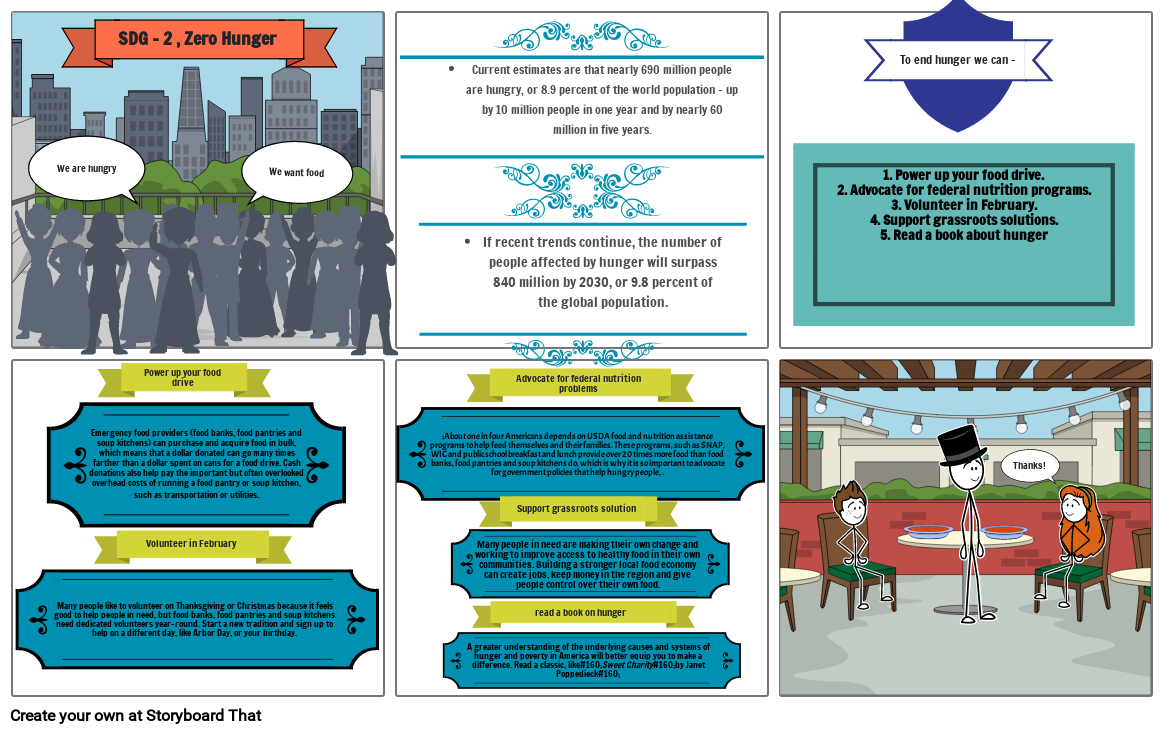zero hunger

Storyboard Text
- We are hungry
- SDG - 2 , Zero Hunger
- We want food
- Current estimates are that nearly 690 million people are hungry, or 8.9 percent of the world population – up by 10 million people in one year and by nearly 60 million in five years.
- If recent trends continue, the number of people affected by hunger will surpass 840 million by 2030, or 9.8 percent of the global population.
- 1. Power up your food drive.2. Advocate for federal nutrition programs.3. Volunteer in February.4. Support grassroots solutions.5. Read a book about hunger
- To end hunger we can -
- Many people like to volunteer on Thanksgiving or Christmas because it feels good to help people in need, but food banks, food pantries and soup kitchens need dedicated volunteers year-round. Start a new tradition and sign up to help on a different day, like Arbor Day, or your birthday.
- Emergency food providers (food banks, food pantries and soup kitchens) can purchase and acquire food in bulk, which means that a dollar donated can go many times farther than a dollar spent on cans for a food drive. Cash donations also help pay the important but often overlooked overhead costs of running a food pantry or soup kitchen, such as transportation or utilities.
- Volunteer in February
- Power up your food drive
- ;About one in four Americans depends on USDA food and nutrition assistance programs to help feed themselves and their families. These programs, such as SNAP, WIC and public school breakfast and lunch provide over 20 times more food than food banks, food pantries and soup kitchens do, which is why it is so important to advocate for government policies that help hungry people, .
- A greater understanding of the underlying causes and systems of hunger and poverty in America will better equip you to make a difference. Read a classic, like#160;Sweet Charity#160;by Janet Poppedieck#160;
- Many people in need are making their own change and working to improve access to healthy food in their own communities. Building a stronger local food economy can create jobs, keep money in the region and give people control over their own food.
- Advocate for federal nutrition problems
- read a book on hunger
- Support grassroots solution
- Thanks!
Over 30 Million Storyboards Created
No Downloads, No Credit Card, and No Login Needed to Try!
